How do you as an early childhood educator prepare for the assessment and rating process?
Perhaps it feels like the process is pushing you to write even more than you already do, to find something you're doing wrong or to identify what you have to do better ...and frankly, this isn’t very motivating is it?
In this Empowered Educator 5 Stepping Stones Assessment Series, I am going to show you how you can instead use a variety of methods, tools, strategies, and processes to not only meet outcomes and standards but to show evidence that you're exceeding without relying on that perfect paperwork dream.
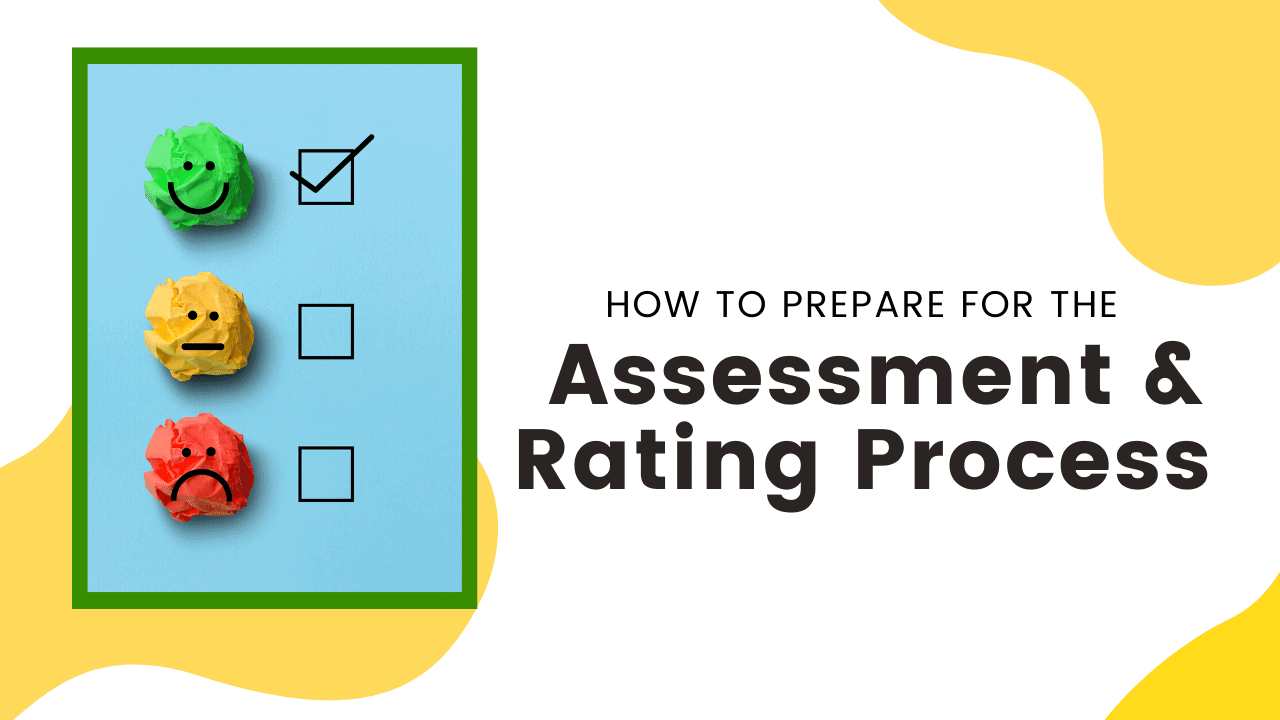
By the end of this blog series, you'll know how to identify exactly what core areas of your work to review and focus on first when you're preparing for your next assessment and rating (or Accreditation process or Review - depending on where you are in the world!), and you'll also have a better understanding of how to utilise what you're already doing in day to day practice and work with your individual strengths instead of against them, which so many of us do.
How can Educators turn the assessment and rating process into an opportunity?
Shifting our thinking a bit about the assessment process from something that is stressful and must be approached with fear to an opportunity is really going to make a difference to how you prepare and approach for your assessment or review.
Commit to taking small steps that will help you shift that mindset instead toward...
How could I see this as an opportunity to show off what I do rather than to identify everything I do wrong?
When our thoughts are conditioned to only identify what we are doing wrong and must change, resentment begins to roll in and it is hard to stay motivated. So, we tend to dismiss opportunities for self-improvement as a great thing not only for us, but for the children and families as well.

"I believe we can all become empowered educators with the simple acknowledgement that it's okay not to know everything, as long as you're willing to learn and grow. And I think we should all be doing that no matter what our role is."
- Jodie Clarke -
In this 5 Stepping Stones assessment series my goal is to help two core groups of educators. Which one do you most resonate with?
Group 1
Group 2
I created this series to try and reach out to the majority of early childhood educators so I'm not just listing every specific thing you could do to meet the Australian National Quality Standards. I want you to think bigger than just ticking boxes off.
If you just want a cheat sheet or generic standards checklist you can find them all over the internet but not in this article! This series is a little different. I will be giving you the information and out of the box perspective that will support you to extend your current knowledge and ultimately feel more confident in your practice no matter what standards or framework you follow.
That's why I’m introducing educators like you to my five stepping stones instead because after years of trial and error and a whole lot of reflection, I have identified that these ‘stones’ create a bridge into the majority of categories and standards for early childhood best practice.
My aim is to help you see assessment through a broader lens - to step back from only focusing on the terminology, checkboxes and numbers!

"Accreditation. Assessment. Review. Ratings. I've worked in various roles within the early year’s sector for over 30 years now and I find that they all encompass pretty much the same process... they just keep changing the names on us."
- Jodie Clarke -
In this first article of the series I’m going to share with you a quick, fun activity you can do to help with motivation and not knowing where to start with your assessment and rating process preparation.
I call this activity the Assessment Post It Party. This is something you can schedule in to do next week with team members or individually and will really show you how you can break this assessment process down into easier steps.
Assessment Post It Party
The Assessment Post It Party Activity is a different approach to help educators engage with the process and see things visually rather than all just listed out on a worksheet or something equally as boring!
How to get started with an Assessment Post It Party
Guess what? It’s very simple, so grab that chocolate or drink of choice as I walk you through the steps!
Assessment Post It Party Steps
Grab a few packs of Post It Notes and a Sharpie.
Set a timer for 30 minutes - no longer than that! The time limit is important so that this activity doesn’t become something that turns into this big, long drawn out process that makes you overthink what you want to do.
The time limit also helps you to focus more on including the first things that pop into your head because they are usually the ones you know you're doing well and we want to acknowledge those, not forget them because otherwise you can easily fall down the rabbit hole of only listing what you are not doing or *think* you should be doing.
Play some good music - it helps to set a ‘party’ mood.
When you turn the timer on ask the question…
If an assessor or someone who doesn't know your service or your role and had just entered your early learning space….
What might they SEE in front of them?
What could they FEEL?
What would they HEAR?
With the timer on, think of all those things that you're currently doing and jot them down on separate sticky notes - add in everything you think is relevant.
Every thought, action, resource, environment area, routine step, embedded practice, piece of paperwork, anything that comes to mind, don’t overthink it. Take this opportunity to look through someone else’s eyes for 30 minutes.
Sort & Review to Visualise the Assessment & Rating Process
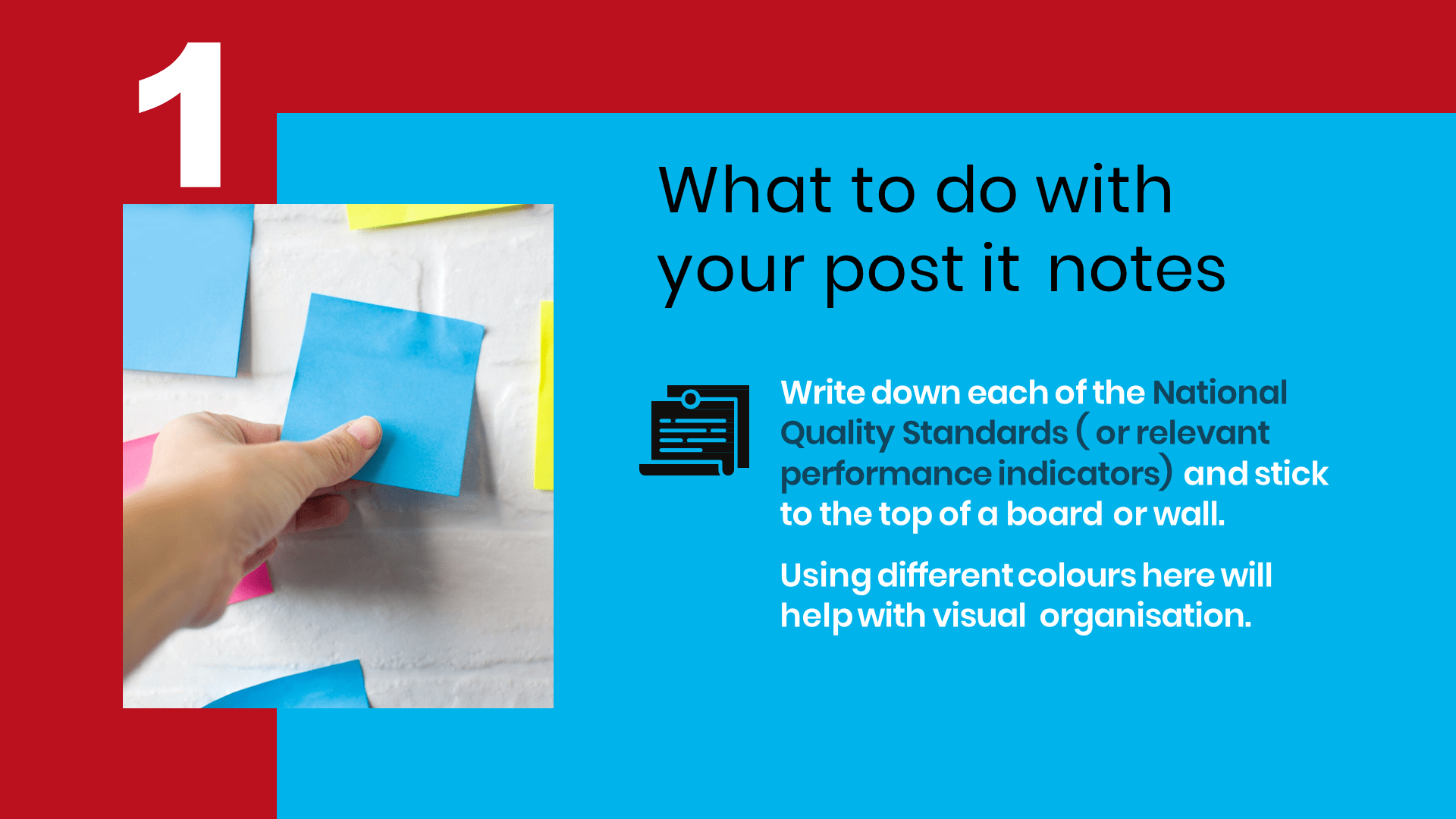
Using different coloured sticky notes (optional), write down each of the national quality standards (NQS), or the relevant performance indicators for your country and stick to the top of a board or a wall or a window arranged across the top as headings.
Now you have your heading notes across the top, you are going to sort all of those sticky notes you wrote during your 30 minute session under each of those standard sections/headings to form columns.
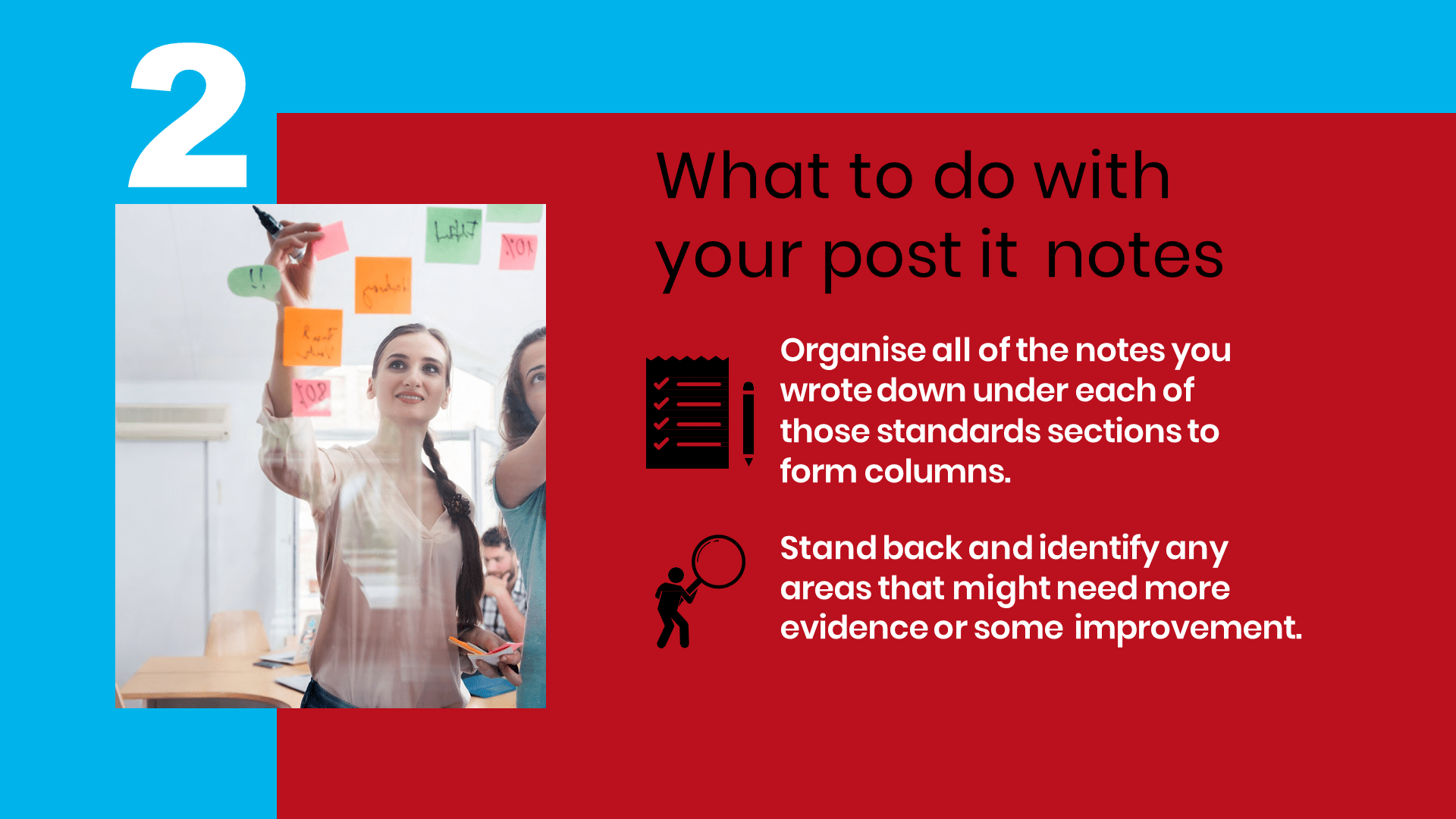
When you have finished doing this (as an individual or team) stand back, identify any areas you think might need more evidence or improvement, because what you'll find is you probably end up with quite a few sticky notes under one or two standards, and you perhaps don't have many on some of the others.
This visual you have created is a helpful and interactive way to help you identify where you need to focus your energy first and see where you need to go.
Kathleen (Heidi) McGrogan from Fingerprints Family Day Care recently shared with us after taking part in her own post it party that the exercise helped her to discover the following….
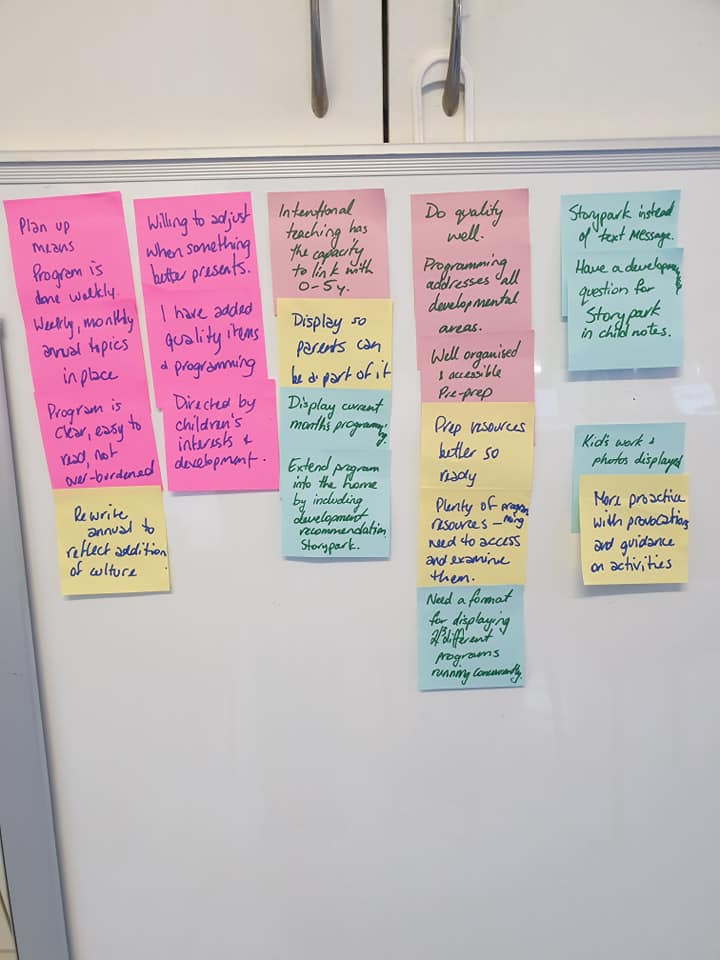
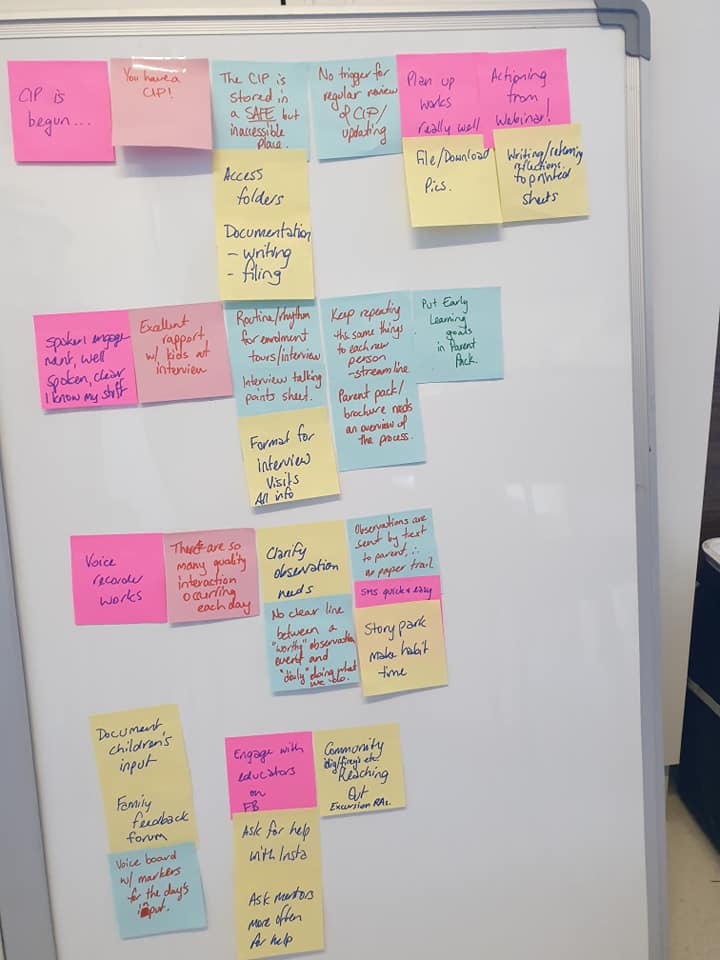
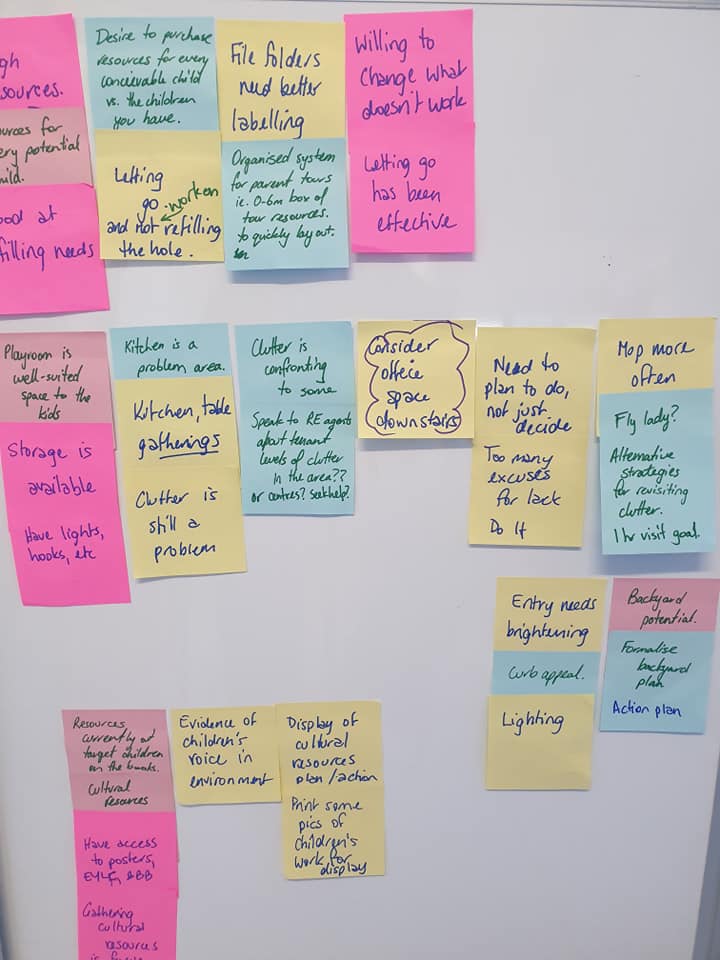
Director Katrina Papageorgios shared with us after taking part in a post it party with her team of educators recently that the exercise “Reaffirmed what we do well”.
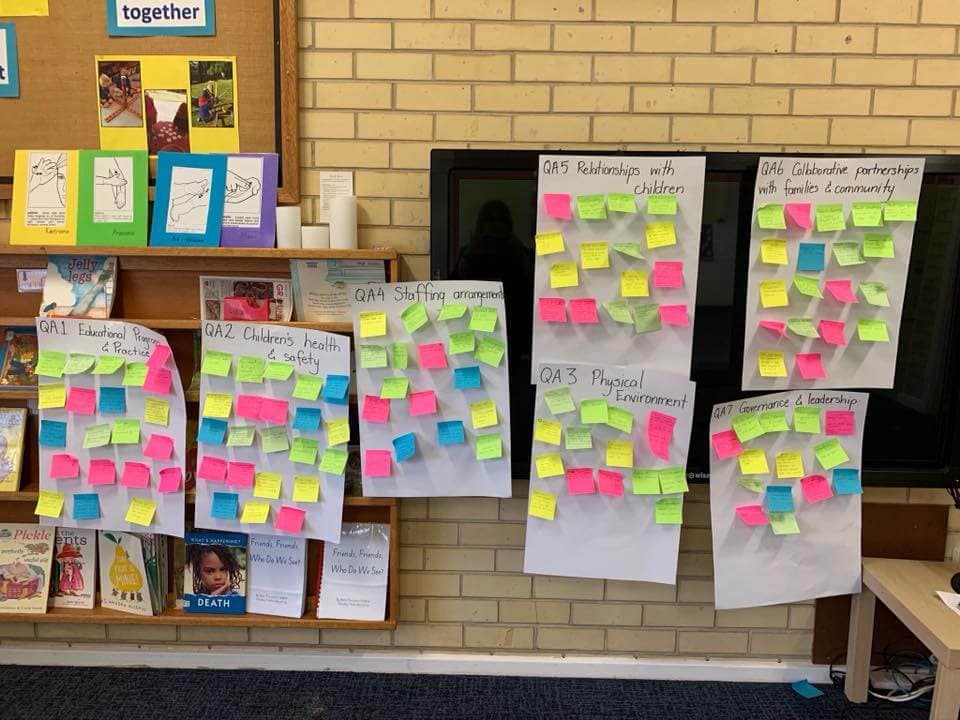
When looking at your post it board, note if there any columns or groups that are obviously longer - instead of just ticking off that standard because you have filled a column though...first reflect on whether that might actually mean that you are possibly doubling up on information, writing to much or recording documentation that you just don't need to be doing.
Could you spread some of those post its across into the other different standards and indicators or remove them from your process altogether perhaps?
So you can now see that this easy visual exercise can be really beneficial if you are preparing for an assessment visit. It's fun. It's only quick, 30 minutes and then you can take 15 minutes afterwards to step back and review what you've created.
What Does An Assessment Post It Party Tell Educators?
What I love about this activity is that even though it is a really simple exercise, it will help you discover…
Exactly what you're already doing (if it stands out to you in 30 minutes - it will no doubt stand out to someone else!).
Areas you feel
present a challenge,
or might need improvement and further assessment.
Tasks, actions or practice you now realise you're actually doing well and can save time by simply building on from these. It's important that we take opportunities to recognise what our strengths are!
AND there is no lengthy self-reflection or writing required!
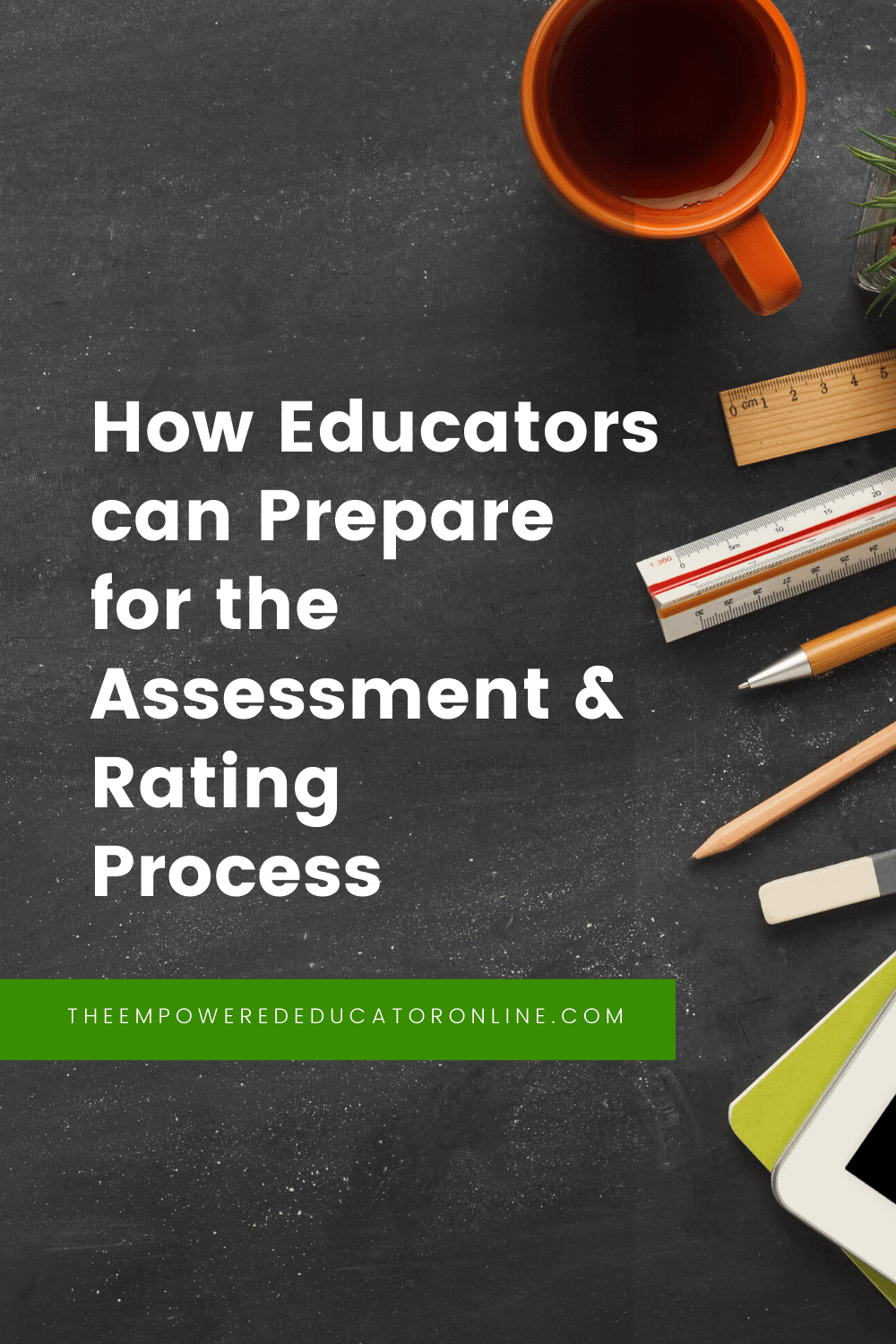
The idea is that when you use this post it party exercise in combination with the information relevant to you from this 5 Stepping Stones Assessment Series, you'll see a clear pathway towards exceeding and then can confidently take those steps and use the tools you need to get there faster with a lot less stress!
Reflection Action Step
Make sure you take a photo of your post it wall or board to show evidence of team collaboration and critical reflection then transfer relevant information into your QIP document as well (your quality improvement plan).
You can obviously do a post it party more than once. You might like to do it at the end of every month to assess progress in a more visual format or just as an option for all team members to contribute to assessment preparation.
If you need a little extra help to get started you can download and use the FREE post it party action guide here to give you a fast way to gain a clear picture of what you already do, what you don't need to do and create action steps and goals for where you need to get to.
I want you to imagine now what it would feel like if you actually looked forward to assessment visits as an opportunity to be recognised and appreciated for all of that work you do everyday and how this effort contributes to the growth of your service and provides quality outcomes for children and their families.
Can you imagine what it would feel like if you knew HOW to confidently prepare for an assessment visit and where to focus your time and energy instead of just worrying about collecting bits and pieces of paperwork ?
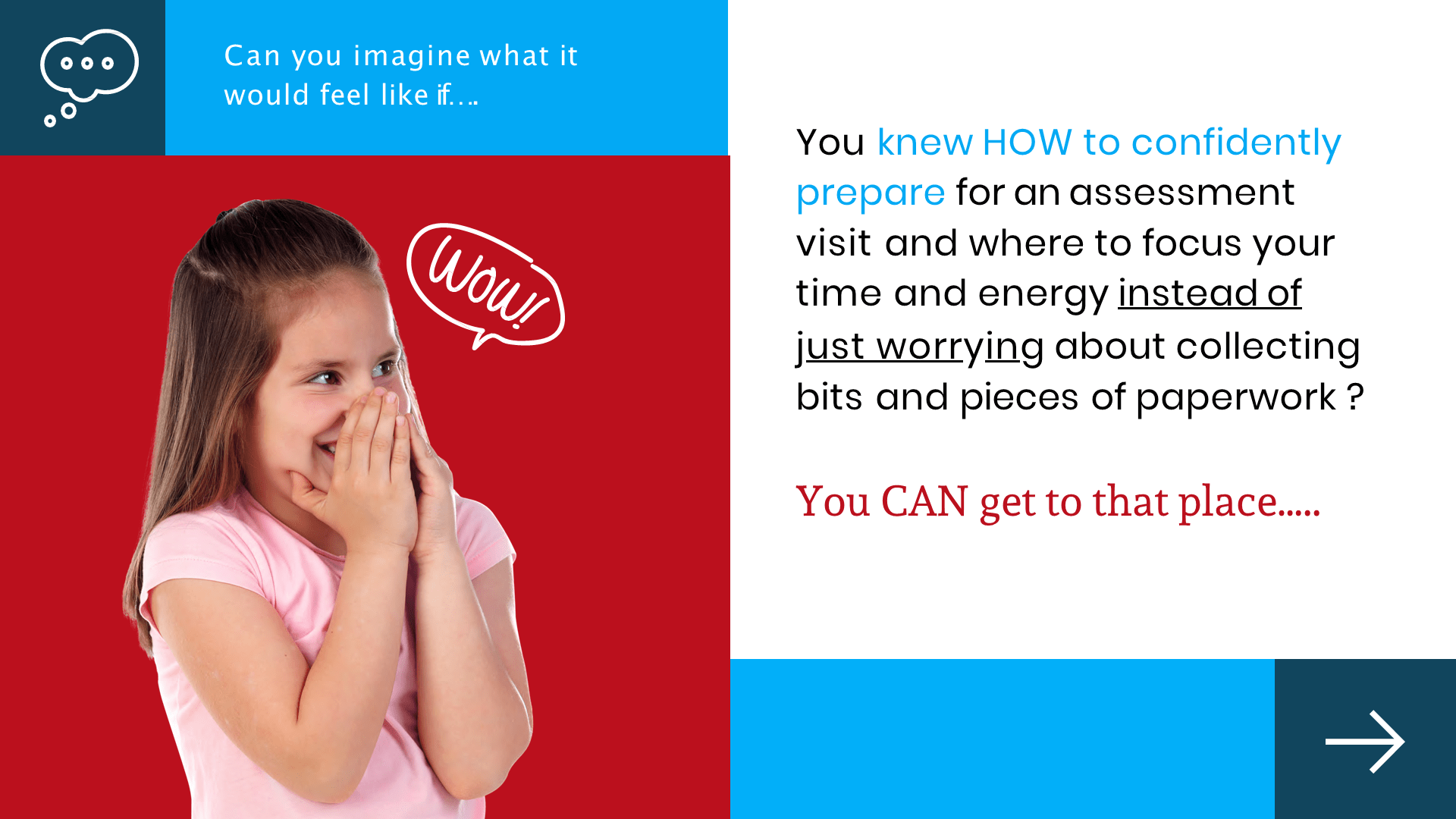
You CAN get to that place Empowered Ed…..
….because through this blog series I’m helping you to understand that documentation is only one part of the puzzle to achieving that ongoing exceeding standard. And it means you're no longer going to be focused only on paperwork.
As educators, we of course need to do paperwork and complete documentation, but you don't have to make that your whole practice or let your process of documentation define your worth as an educator.
Sometimes we can't see the path forward because of the obstacles we've put in our own way.
What if you instead stepped back and stopped spending the majority of your preparation time setting up big folders and huge portfolios for every standard and worrying about trying to stuff them with every bit of evidence you can find to reach the magical exceeding or pass your accreditation assessment?
You could instead consider the bigger picture, what you are already doing in your everyday practices. What someone else will see and what you could confidently tell them about it.
This is why I encourage educators to consistently find ways that they can embed everyday actions and practices throughout the program, the routines, service operations and environments...OR if you're a leader, to help educators do this effectively and understand WHY they're being asked to do it.
Top Tip
You will see those elements showing up in your post it notes...the ones you wrote off the top of your head immediately. You could do that so easily because you already do those actions, routines, activities or rhythms every day without really thinking about it! They have become embedded!
I want to be really clear that I’m not attempting with this series to cover every single thing educators need to do to prepare for an assessment because it's a big topic.
The Empowered Ed community comes from a wide range of different services, varying roles and different areas of the world, so my goal with this Stepping Stones Series is simply to give you some ideas, strategies, and suggestions to help you understand the process better and build a pathway with your service or your team that embraces your strengths and moves you forward.
Not everyone is exceedingly fantastic at documentation. And that's honestly okay, because what is important and what I want you to take away as one light bulb moment from this series is that you have to first determine what your strengths are, what you do well and how you could show evidence of this in different ways. You can do this!
Ready to go and try your first assessment post it party? Make sure to share a photo or two of your wall , window or board with us in the Empowered Educator Facebook Group!

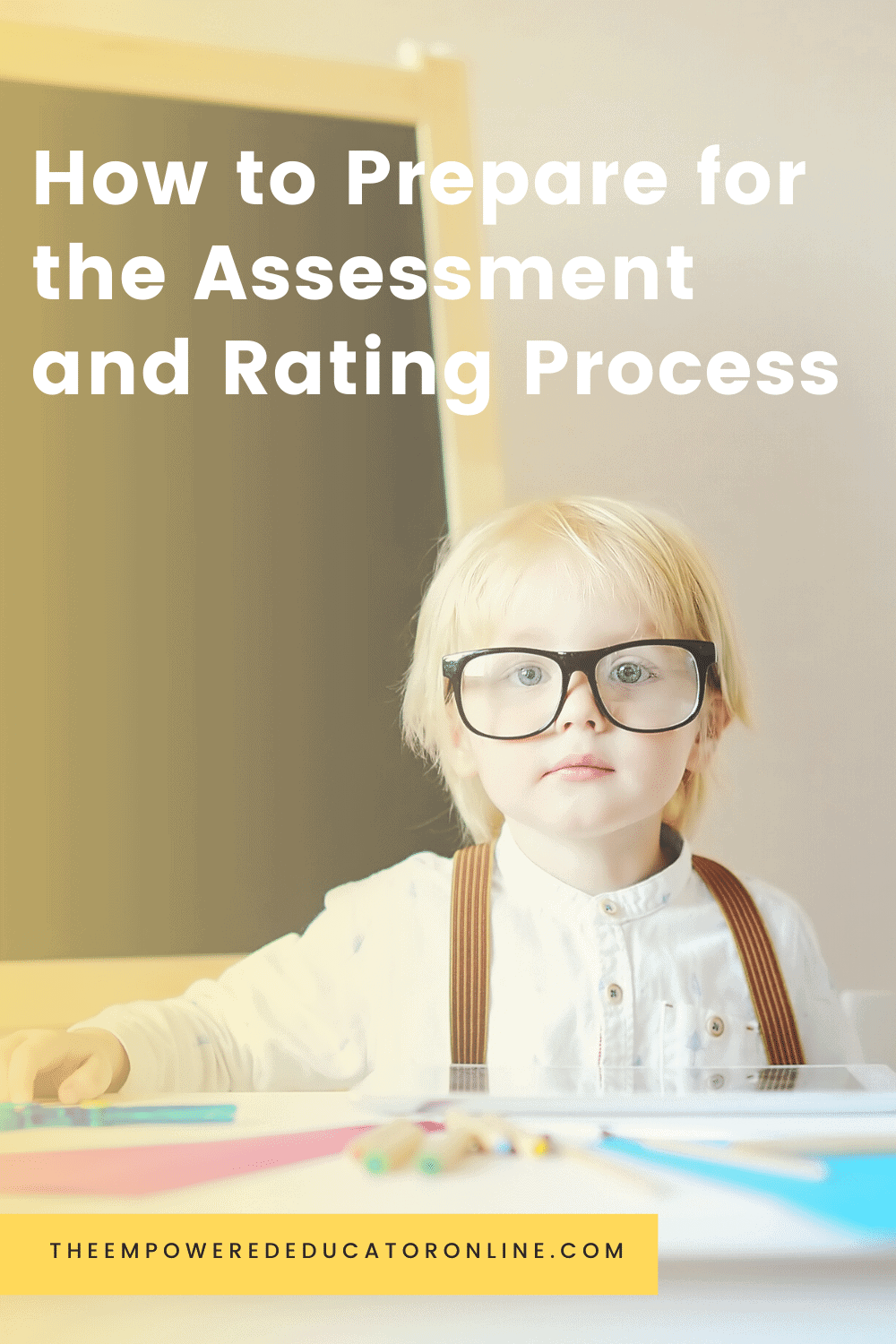
A Little About Me

Jodie Clarke is an early childhood professional supporting educators who want and need to stay passionate about the work they do! She has 30 years hands-on experience in the early childhood and human services sectors across many different roles.
Jodie is mum to 3 in Australia and has already helped thousands of educators with their work through her popular blog posts, activity ideas, online training and e-books.
Leave a Reply